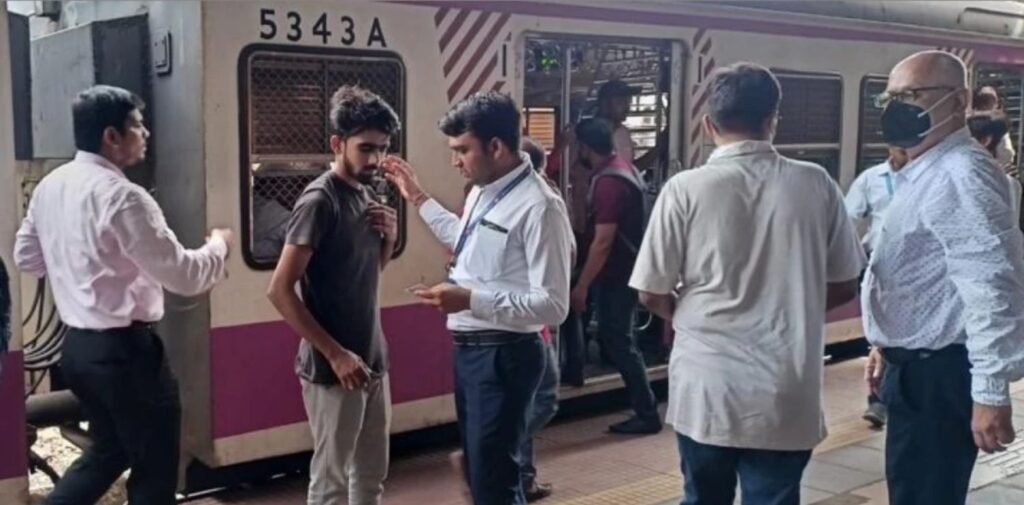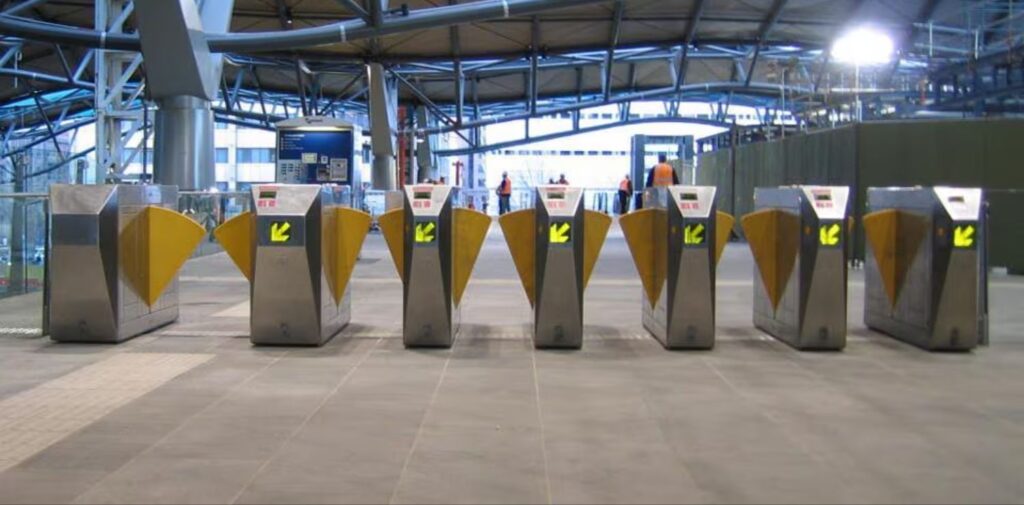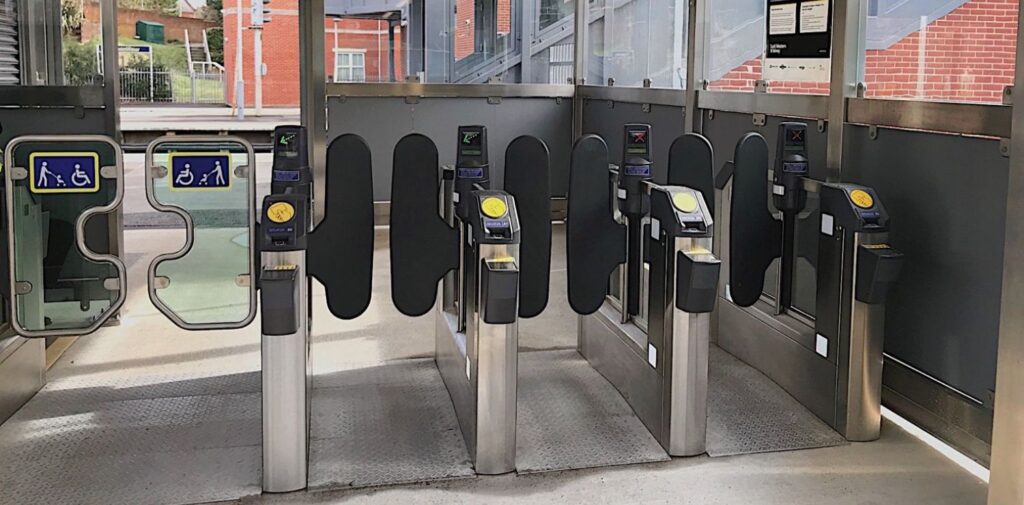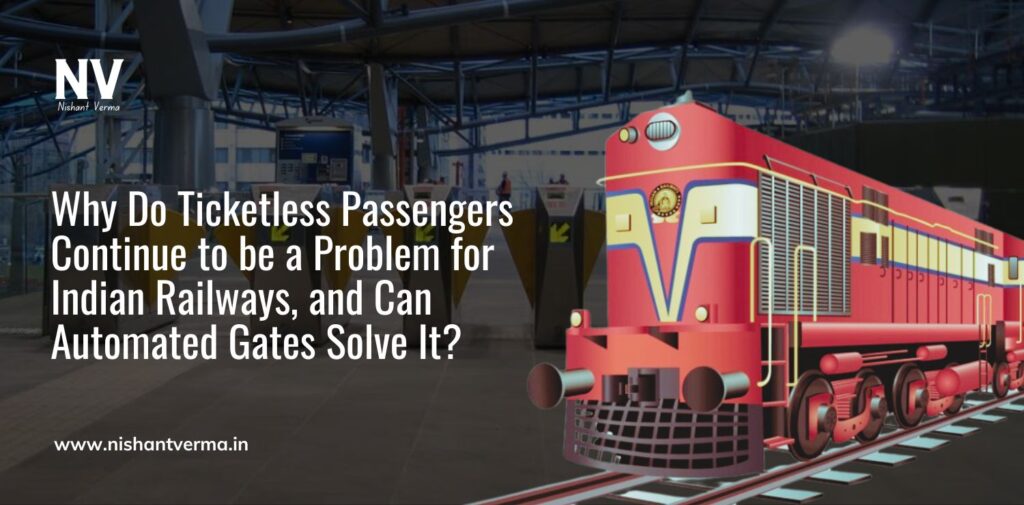Ticketless travel has long been an issue for Indian Railways, but the recent statistics from FY24 show a staggering rise in the number of offenders. Over 3.61 crore passengers traveled without tickets, contributing to a massive loss for the railways. However, the fines collected from these passengers reached ₹2,231.74 crore, highlighting the severity of the problem. The question arises. Why do so many people continue to evade tickets, despite the government’s efforts to improve infrastructure and services? This article will delve into the deeper reasons behind ticketless travel, explore the issue of civic responsibility, and evaluate the potential solution of implementing automated gates, similar to those used in airports.
What Are the Main Reasons for Ticketless Passengers?
While it may be easy to point fingers at passengers who board trains without valid tickets, it’s important to consider the underlying reasons for this behavior. Several factors contribute to the high rate of ticketless travel in India:
- Affordability Issues: Although Indian Railways offers some of the cheapest travel options in the world, there is still a segment of the population for whom even these fares may be unaffordable. In many rural areas, where access to banking and online payment systems is limited, purchasing tickets can become a challenge. Some individuals, especially daily wage workers and low-income travelers, may risk traveling without tickets, believing they can avoid the fines.
- Lack of Awareness: Despite widespread digital awareness campaigns, a significant part of India’s population remains uninformed about the long-term benefits of following regulations. Many people are either unaware of the consequences of ticketless travel or believe that they can get away with it.
- Ease of Evasion: The lack of strict enforcement at stations, combined with overburdened ticket-checking systems, makes it easy for individuals to board trains without tickets. In crowded stations or during rush hours, ticketless passengers often manage to evade ticket-checking personnel.
- System Overload: Indian Railways caters to millions of passengers every day, and during peak travel seasons like holidays or festivals, the system is often overwhelmed. Many travelers fail to get confirmed tickets and resort to traveling without them, hoping they can purchase tickets onboard or plead ignorance if caught.

How Much Is Ticketless Travel Costing Indian Railways?
The financial impact of ticketless travel on Indian Railways is massive. In FY24, Indian Railways collected ₹2,231.74 crore in fines, a figure that represents not just the cost to ticketless travelers but also the loss to the system.
However, fines alone are not a sustainable solution. For every rupee collected, there are still losses in terms of inefficiency, overburdened systems, and uncollected revenues. Ticketless travel leads to overcrowded trains, which reduces the comfort and safety of legitimate passengers. The costs extend beyond revenue to service quality, maintenance issues, and customer satisfaction.
Can Infrastructure Solve the Problem of Ticketless Travel?
The Indian government has taken steps to improve railway infrastructure. The introduction of faster trains, upgraded stations, and digitized ticketing systems are all aimed at enhancing passenger experiences. However, improved infrastructure alone is insufficient to tackle the problem of ticketless travel. The root issue lies not just in infrastructure but also in the behavioral patterns of passengers.
Some have argued that stations should be equipped with automated gates, similar to airports, where passengers cannot access platforms or trains without a valid ticket. These automated gates would require travelers to scan their tickets or use electronic passes, thereby blocking those without valid documentation from entering the premises.
But how feasible is this for India’s railways, which handle over 23 million passengers daily?

Are Automated Gates the Right Solution?
Airports worldwide, including those in India, have successfully implemented automated gates to control access to boarding areas. These gates are designed to read QR codes or barcodes on tickets, preventing passengers without valid tickets from entering secured areas.
For Indian Railways, the introduction of automated gates could be a game-changer. However, there are both benefits and challenges to implementing such a system.
Benefits of Automated Gates
- Eliminating Ticketless Travel: Automated gates could significantly reduce the number of ticketless travelers. By only allowing access to those with a valid ticket, the system would create a physical barrier that prevents evasion.
- Increased Efficiency: Automated gates can help streamline the boarding process, reducing the need for manual ticket checking. This would free up railway staff to focus on other important tasks, such as managing passenger safety or attending to onboard services.
- Enhanced Security: In addition to reducing ticketless travel, automated gates could also improve station security. These gates can be integrated with surveillance systems and passenger databases, enabling authorities to monitor suspicious activities and ensure a safer environment for travelers.
Challenges of Implementing Automated Gates
- High Cost: One of the biggest hurdles in implementing automated gates across all railway stations in India is the cost. Indian Railways operates over 7,000 stations, and equipping all of them with modern gate systems would require a significant investment.
- Infrastructure Compatibility: Many of India’s railway stations, especially in rural and semi-urban areas, do not have the necessary infrastructure to support advanced gate systems. These stations would need to undergo extensive upgrades before automated gates could be installed.
- Crowd Management: During peak hours and holiday seasons, train stations are often flooded with passengers. Automated gates could cause bottlenecks if the technology fails or if passengers are unfamiliar with how to use the system. Efficient crowd management will be essential to ensure that these gates don’t create delays or chaos.
- Digital Literacy: While urban areas may adapt to automated ticketing systems quickly, rural areas, where digital literacy remains low, may face challenges. Passengers from rural regions may struggle with electronic ticketing or scanning systems, leading to confusion and further delays.

What Role Does Civic Sense Play in Solving This Problem?
While technology can help reduce ticketless travel, the real issue may lie in a lack of civic responsibility among passengers. Despite India’s economic and infrastructural growth, many people continue to flout basic rules. This behavior reflects a larger problem: the lack of respect for public resources.
Ticketless travelers, whether motivated by financial limitations or opportunistic behavior, often ignore the impact of their actions on the system as a whole. Trains become overcrowded, resources are strained, and the quality of service deteriorates. Moreover, when some people get away with not paying for their travel, it fosters a culture of evasion, making it seem acceptable to break the rules.
Addressing this issue requires a dual approach: improving infrastructure (like automated gates) while also instilling a sense of civic duty in passengers. Awareness campaigns and stricter enforcement could go a long way in encouraging people to buy tickets and respect public property.
Can Indian Railways Strike a Balance Between Infrastructure and Civic Responsibility?
In conclusion, while automated gates at railway stations could help curb ticketless travel, they are not a silver bullet. Indian Railways faces unique challenges in terms of the scale of its operations, the diversity of its passenger base, and the varying levels of infrastructure across the country.
Ultimately, solving the problem of ticketless travel will require a balanced approach that combines technological solutions with efforts to improve civic sense among passengers. The government can build world-class infrastructure, but until people recognize the importance of following rules, issues like ticketless travel will persist.
A future where Indian railways are ticketless-travel-free is possible, but it will require both systemic upgrades and a shift in societal attitudes. Automated gates may be a part of the solution, but they must be supported by education, enforcement, and a collective responsibility towards public resources.




